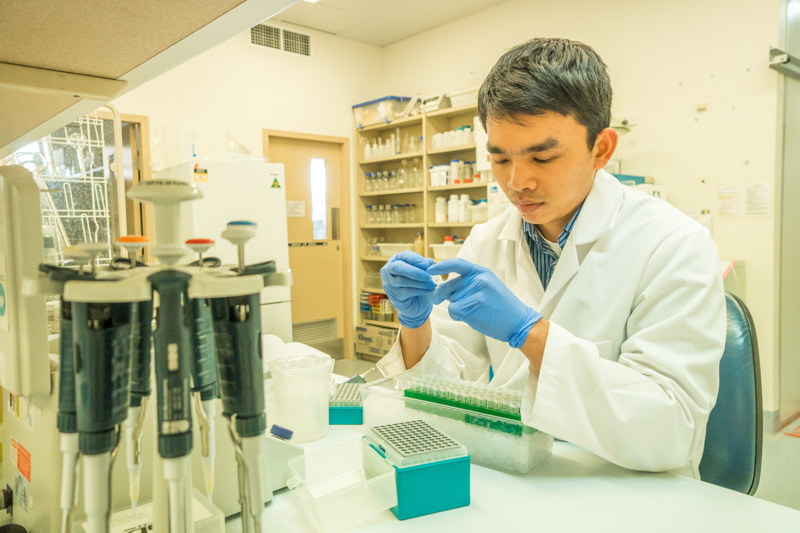
Our research
Cotton pathology and integrated disease management
Diseases are one of the biggest yield constraints for the Australian cotton industry. Some diseases such as Verticillium wilt and black root rot are challenging the ability for some growers to grow cotton. ACRI scientists are currently undertaking research to help identify novel chemistries, diagnostic tools to identify potential disease risk within the field , and farming systems management practices that promote disease suppression.
The Cotton Pathology Research Unit also delivers key diagnostics, surveillance, and response capacity for cotton diseases in NSW.

Insecticide resistance management
Insecticide resistance is one of the greatest limitations to cotton production in Australia. The introduction of BT cotton (insect tolerant varieties) has reduced dependence on insecticides for control of Helicoverpa armigera. However, secondary pests such as aphids, mites and mirids have become more prominent, requiring targeted insecticide intervention. Over-reliance on insecticides can result in the development of resistance to important insecticidal classes.
This research program area is focused on increasing knowledge and understanding of insect resistance in the cotton and grains industries by determining the role of population genetics in resistance evolution, and identification and characterization of potential candidate genes for development of molecular diagnostic tools for resistance monitoring.

Cotton agronomy
Researchers are aiming to identify practical management options for cotton growers to improve yields, profitability and optimise both nitrogen fertiliser and water resource efficiency. Improved nitrogen and irrigation management will also assist in reducing greenhouse gas emissions within the cotton production system.
Environmental Stewardship
The Australian cotton industry has a history of pro-actively managing its impact on the environment and strives to have no off-farm environmental impact.
To demonstrate responsible stewardship of agro-chemicals, the NSW Department of Primary Industries is working with the Australian cotton industry to characterise spray drift which may result from cotton farming operations and to identify and recommend new and innovative best management practises to reduce pesticide movement into waterways. .
Cotton weeds and herbicide resistance
While historically the Australian cotton industry has had a strong integrated weed management system, the extensive use of herbicide tolerant (HT) cotton varieties and the spread of weeds across the landscape has seen resistant and hard to control weeds emerge.
Research including industry field weed surveys is aiming to strengthen the crop management plan for herbicide tolerant cotton and provide practical options for weed management which growers can apply directly to their farming systems.

Soil and water management
Research is being undertaken to investigate and close the potential yield gap in the cotton farming systems of Australia. The findings will provide insight into the implications of soil and crop management impacts on yield and provide direct outcomes to develop improved future soil and crop management strategies for the cotton industry.
The Australian cotton industry is a global leader in water use efficiency; however, as irrigation water becomes increasingly scarce, the Australian cotton industry remains committed to continual improvements in water use efficiency and demonstrating responsible use of our shared natural resources.
With financial support from industry researchers are continuing the long term monitoring of water use efficiency in the cotton industry to deliver annual irrigated and dryland cotton water productivity benchmarks.
While the emphasis at ACRI is on cotton, the institute also engages in other agronomic research such as summer and winter crops including wheat, chickpeas, soybeans and mungbeans.
Summer pulse agronomy
Develop crop agronomy packages to improve the profitability and productivity of soybeans and mungbeans in the northern farming system. Potential environmental benefits include increased proportion of pulse crops in the rotation thereby optimising cereal disease breaks and improved soil fertility.

